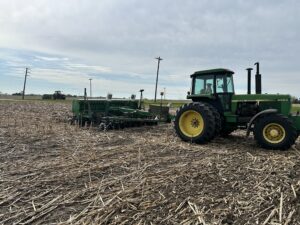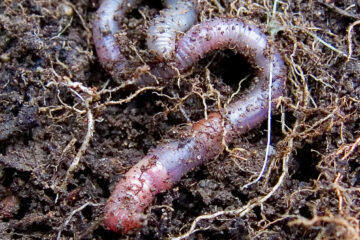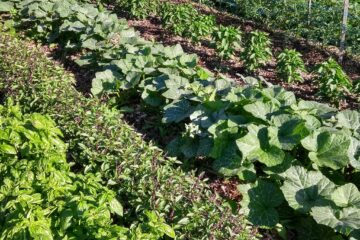By the time you read this, the planting season for Will County farmers will be winding down. Farmers have planted their crops a lot differently in the 6 decades since I was born. I witnessed two antiques of the industry planting on opposite sides of the road recently.
To the best of my knowledge most farmers in the 60’s planted in wide rows with the same planter for corn and soybeans. Wide rows would be 36, 38, or 40 inches wide. Fields were cultivated continuously to control weeds along with some banding applications of weed killers to control weeds in the row where the cultivator could not reach.
Rows became narrower when it was discovered that soybeans, as well as corn, yielded better in 30” rows. Some farmers began to plant solid seed soybeans with a grain drill in very narrow rows of 6, 7, or 8 inches wide. Weeds were controlled with broadcast applications of herbicides.
In the late 80’s cultivation started to fall out of favor. Some farmers would add extra rows, (skip rows) to their corn planter to plant 15” rows of soybeans after the corn planting was complete. The drilling of soybeans also became more popular with better herbicide technology and yield improvement.
As the 1990’s approached, no-till soybean drills became the trend. Planting seeds directly in the ground with no previous tillage saved time from tillage and fuel, but the drills did have a downside. They were narrow, usually only 15’ wide; many traditional planters were now becoming much larger, 20, 30, or 40 feet wide.
As the 20th century ended, no-till drills started to fade, and the twin row planter boomed. Farmers could now use the same planter in 30” rows for corn and 15” rows for soybeans. 40 to 60-foot-wide planters became common; they not only planted faster than soybean drills, but they also used less seed resulting in a cost savings. When field conditions were good, farmers could plant many acres per day.

About 15 years ago some farmers started pushing soybean planting dates much earlier, from May into April. Yields on these fields were amazing. But farmers usually used the same planter for corn as soybeans and could not plant soybeans early when they were planting corn. Now some farmers have two planters so they can plant both corn and soybeans at the same time. Some farmers without two planters have decided to plant soybeans before corn in recent years.
In 1986 I purchased a no-till drill for planting soybeans. In 39 years, I avoided all the changes with planters for soybeans by
staying with my old, tried and true method of planting 15’ strips of soybeans. On April 30, I was planting soybeans along the road while a neighboring farmer was in a field on the other side of the road, also with an old no-till drill.
For a while, it was as if the old drills were coming back into style. This spring I am still using my 39-year-old no till drill and sticking with old fads. Rest assured, I will keep using it until I retire, but you won’t catch me wearing bell bottom pants, listening to disco music or cultivating my corn fields. Those trends are officially over on my farm; however, I do have a 1977 International tractor with an 8-track tape player, just in case that revives like vinyl.



0 Comments